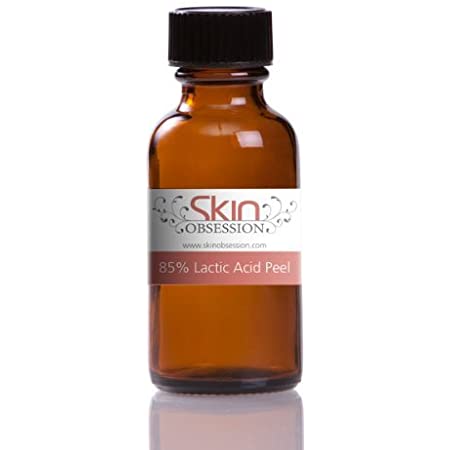Still looking for the multi-beneficial product or procedure that restores your skin’s youthful texture, structure, and complexion? Have you ever heard about the benefits of chemical peels?
These procedures address multiple skin issues that include dark marks, rough skin, pale complexion, wrinkles, age spots, and saggy skin, just to name a few. Will a chemical peel suit you?
Related: Microdermabrasion Vs Chemical Peel: Which Exfoliation Method Is Best For You?
What Is Chemical Peel?
A chemical peel generally refers to a group of procedures that uses chemicals of varying intensities to literally make your skin peel off.
Among face rejuvenation methods, chemical peels use chemical agents that slough off your skin’s layers so that newer, lesser damaged skin can rise to the surface and replace the damaged layer.
Do chemical peels really work? Below are just some of the top benefits that your skin can derive from a chemical peel procedure:
- Exfoliate dead skin cells
- Improve the rate and efficiency of skin regeneration and turnover
- Lessen the time it takes for skin to heal and recover from damage and injury
- Fade acne scars
- Smoothen uneven skin surfaces
- Improve skin texture
- Lighten age spots
- Transform your skin to have a fairer, brighter complexion
- Soften the appearance of fine lines and wrinkles
- Make photo damaged skin appear much less noticeable
Is a chemical peel safe?
Contrary to popular belief, your skin doesn’t have to burn or sting to make sure that a chemical peel is working.
In fact, any skin type, including the most sensitive types, can benefit from a chemical peel.
Chemical peels are specifically grouped according to the type of chemical agent used.
Listed below are just some of the more common chemical peels according to chemical agents used:
1. Glycolic Acid Peel
This is considered a light to medium peel, depending on the concentration of glycolic acid.
This chemical agent is derived from sugar and is generally a preferred procedure for the maintenance of healthy, radiant-looking skin.
At higher concentration levels, it can also slough off the skin to lighten age spots and even fade fine lines.
2. Lactic Acid Peel
This is considered to be an alternative to glycolic acid peels and is generally used for women and men who have a low tolerance for glycolic acid.
This is the preferred chemical agent for the use of people with reactive and hypersensitive skin types.
A lactic acid peel is so mild that, at just the right concentration, can be used once every week.
Benefits include relief from mild to moderate cases of acne, improvement of shallow lines, and maintaining the ideal pH balance of the skin.
3. Salicylic Acid Peel
In contrast to the first two alpha-hydroxy acid-based peels, this chemical agent is considered to be a beta hydroxy acid and one of the most well-recognized treatments for acne.
It works in two ways to promote skin clarity.
First, it draws out impurities from your pores. Second, it helps control and regulates sebum production
4. AHA Vitamin C Peels
This is a combination of AHA and Vitamin C which is an ideal chemical treatment solution for improving dark marks and other hyperpigmentation issues.
This is also a popular maintenance peel that promotes a glowing complexion, better skin nutrition, and enhanced protection against free radicals and other environmental stressors that can damage the skin.
5. Trichloroacetic Acid Peel
A strong chemical peeling agent, it is commonly prescribed for moderate to severe cases of acne, as well as for corrective purposes that require an intense and deeper peel.
Men and women desiring relief from deep-seated wrinkles can also try peeling using this chemical agent to smoothen out their skin surface.
What Happens During a Chemical Peel?
The most important part of electing a chemical peeling procedure is when you and your skincare consultant decide on which type of chemical agent to use.
You must know that there are generally two categories of chemical peels. One is called, “Chemical Resurfacing” and the others are termed “Chemical Peeling”.
The first is used more for skin maintenance purposes while the latter serves a corrective function.
Factors to consider when choosing which chemical peeling procedure to avail for your skin include: your skin type and structure, your tolerance to chemicals, and the chemical peel results that you desire.
Your session will begin with a cleanse. Next, the chemical will be evenly spread on your skin.
Then, the chemical will be allowed to dry. The entire process will take about an hour to complete.
A careful skincare specialist will be by your side the whole time to make sure that you don’t experience any adverse reaction with your elected chemical peel.
Aftercare is important and it is highly recommended that you stick closely to your doctor’s prescribed care and treatment.
It generally takes at least 3 days up to 2 weeks for the chemical burn to heal completely.
What Are The Advantages Of Chemical Peels Over Other Skin Procedures?
Chemical peels have certain advantages over other professionally administered skin care procedures. Here are just some of those:
- Between microdermabrasion and chemical peels, chemical peels can be adjusted accordingly with your skin type and tolerance, and to achieve the results that you want to see.
- Chemical peels are available in varying concentrations that even the most sensitive skin types will be able to find a suitable chemical peel for their peculiar skin conditions and specific skin issues.
- Chemical peels are a great procedure for relieving skin of acne, acting in multifarious ways to eliminate acne-causing bacteria while simultaneously preventing new breakouts by preventing the spread of infected spores, unlike mechanical skin exfoliation techniques such as Diamond Peel Facial Treatment.
- Chemical peels offer multiple benefits to relieve a wide variety of skin care issues.
- Certain chemical peeling may also be done in the comfort of your own home, either by using a Skin Peeling Serum or, by preparing a DIY chemical peel recipe made from products that you can easily find around your home.
While there are clear advantages, there are also disadvantages relative to other skin care procedures.
The most glaring being the long downtime and the possible associated pains and blisters that can follow application whether at-home or, in-clinic.
The advantage of deeper chemical peels, on the other hand, is that, while it may take longer to heal, it may take just one session to obtain the results that you need to see.
Can Chemical Peeling Be Done At Home?
Certainly. Although you must understand that a chemical peel recipe made from common household products will have less potency to deliver more serious results and more significant changes compared to pure, highly concentrated chemical agents available from your skincare professional’s skin health clinic. Nevertheless, a DIY chemical peel, whether based on an exfoliating product or a homemade concoction, is a viable way to sustain great-looking skin.
Exfoliating products can have multiple uses.
Two top uses are for performing periodic peeling for maintenance or, even for relieving varying degrees of acne.
Chemical peeling also helps in bringing back life to dull skin. For this particular purpose, here are some of the top chemical exfoliants that you can try:
1. Caudalie Glycolic Peel

Caudalie Glycolic Peel – Image/Shutterstock
From the French skincare company that has come to be recognized worldwide for safe and top-quality products, this glycolic peel solution is formulated with a combination of glycolic acid, papain, and viniferine.
As the peeling is taken care of by the glycolic acid in the solution, papain restores your skin’s ideal nutrient levels as it brightens your skin tone, and viniferine boosts your skin’s antioxidant levels for a revitalized skin complexion.
2. Skin Obsession

Skin Obsession – Image/Shutterstock
This product uses an intense chemical agent, the trichloroacetic (TCA) acid which can show dramatic skin transformation that equals the intensity of peeling it creates.
However, the manufacturer generally does not recommend this product for first-time at-home peeling users.
In fact, TCA peels, due to their intensity, are best availed of in-clinic where they can be applied on your skin under the supervision of your skincare specialist.
To know more about this product, read Skin Obsession Review.
3. Murad Rapid Resurfacing Peel

Rapid Resurfacing Peel – Image/Shutterstock
This product is served as a peeling mask that easily applies after a thorough skin cleanse, using one towel for every treatment, no rinsing required.
The formula is gentle on the skin and can be used up to three times weekly depending on your skin’s tolerance to the formula.
Primary components include glycolic acid (10.0%), ascorbic acid, and linoleic acid. The last two ingredients promote a more even skin tone and a fairer complexion. To know more about this product, read Murad Rapid Resurfacing Peel Review.
4. Neostrata Skin Active Perfecting Peel

Skin Active Perfecting Peel – Image/Shutterstock
This product combines glycolic acid[1] and citric acid[2] for delivering the peeling part of the formula, both rendering a mild to moderate exfoliation that effectively speeds up the rate of skin regeneration and renewal.
Arginine further boosts the natural glow of your skin complexion by improving skin synthesis and tightening your pores for a smoother surface texture.
How to do chemical skin peeling at home?
Make sure to follow the manufacturer’s instructions very closely.
If you’re not sure, you should go get your chemical peeling done by a skincare professional whom you can also ask about DIY peeling at home.
Be careful in handling these chemicals because improper use of these products can cause permanent damage to your skin.
If you would like to try a Homemade Chemical Peel Recipe, here’s an easy-to-do concoction that your skin will enjoy and reap lasting benefits from.
Here’s what you need to do to give your skin the homemade goodness of a glycolic acid peel:
- Things you’ll need a bowl, spoon for stirring, refined sugar, juice of 1 lemon.
- What to do: Mix sugar and lemon together in a bowl. Allow the sugar to dissolve into the lemon, leaving behind a reduced number of coarse, tiny pieces.
- To apply: Spread evenly over freshly cleansed skin. Leave on for 10 to 15 minutes. Rinse off with lukewarm water. Immediately follow through with an intensive moisturizer to relieve the skin dryness left behind by your glycolic acid peel.
- Other variations: You can also add in the milk or, dissolve sugar into the yogurt.
To know more about this product, read Neostrata Skin Active Perfecting Peel Review.
FAQ’s:
Que: Are chemical peels worth it?
Ans: Yes, it is one of the most effective facial treatments.
Que: How long do chemical peels last?
Ans: Peeling usually lasts 3-5 days, depending on the actual peel treatment.
Que: What is a chemical peel best for?
Ans: Chemical peels are used to treat wrinkles, discolored skin and scars — usually on the face.
Que: Does a chemical peel remove dark spots?
Ans: Yes, chemical peels are effective in treating all types of dark spots.
Conclusion
Chemical peels can be tough to handle but, most of the things that might be stopping you from claiming the benefits that chemical peels can bring your skin are a myth.
At least, now you know, there’s really nothing to be afraid of about chemical peeling, even when you have sensitive skin.
You should make choosing the most appropriate chemical agent and corresponding concentration a top priority.
Once you’ve accomplished that, all else should go smoothly, and more beautiful skin like never before will unfold before your eyes.
Try it and you’ll see

 By Wendy Gould
By Wendy Gould






